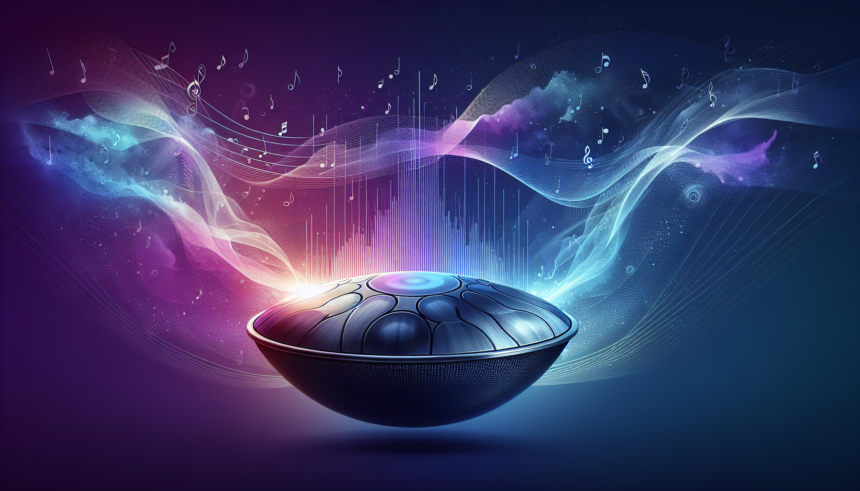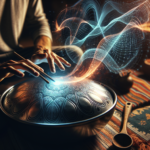The handpan, an instrument that emerged in the early 2000s, has steadily gained recognition in the realm of modern music for its rich, ethereal soundscapes. The unique tonal properties and meditative qualities of this metallic percussion instrument have made it a favorite among musicians exploring the ambient genre. In this article, we delve into the origins of the handpan, its distinct characteristics, and how it has become a key element in contemporary ambient music, providing an elevating experience for listeners around the world.
Origins and Development of the Handpan
The handpan, often referred to by various names such as “hang drum” or simply “hang,” was invented in Switzerland by Felix Rohner and Sabina Schärer of PANArt. The instrument was first introduced in 2001 and drew inspiration from traditional Caribbean steel drums, the Ghatam, and other percussive instruments. Its unique structure consists of two concave shells of nitrided steel glued together at the rim, creating a hollow, resonant body with various tuned notes arranged around a central tone field.
Unlike conventional percussion instruments, the handpan is played with the hands and fingers, allowing for exquisite control over dynamics and expression. Each strike can produce a wide range of overtones, giving the instrument its signature celestial sound. The central note, often referred to as the “ding,” is surrounded by several other notes, which can be tuned to different scales, making each instrument unique.
Handpan’s Distinctive Soundscapes
The sound of the handpan is instantly recognizable for its warm, resonant, and harmonious qualities. Each note can produce multiple tones, contributing to a rich harmonic blend. This characteristic has made the handpan a standout choice for musicians who aim to create immersive and calming soundscapes.
When played, the handpan can evoke a wide range of emotions, from tranquility and introspection to elation and excitement. Its soothing tones are often used in meditation, yoga, and therapeutic settings due to their ability to create a serene atmosphere. Musicians and composers have found that the handpan’s sound complements other instruments in the ambient genre, including synthesizers, strings, and natural sounds, enhancing the overall auditory experience.
Integration of Handpan in Modern Ambient Music
Ambient music, characterized by its emphasis on atmosphere and mood over traditional musical structure, has embraced the handpan due to its ability to produce long, sustained tones and complex sonic textures. The handpan’s versatility allows it to blend seamlessly with electronic elements and acoustic instruments, making it a valuable tool for composers expanding the boundaries of the genre.
Artists such as Manu Delago, Kabecao, and Hang Massive are notable figures who have incorporated the handpan into their compositions, showcasing its potential beyond traditional percussive roles. Manu Delago, for instance, has collaborated with a variety of artists, blending the handpan’s sounds with orchestral arrangements and electronic music. Kabecao, known for his handpan virtuosity, often integrates looping and layering techniques, creating intricate and evolving soundscapes during live performances.
The rise of digital music production has also facilitated the inclusion of the handpan in ambient tracks. Producers can now sample and manipulate handpan sounds using digital audio workstations (DAWs), allowing for innovative compositions that may not be possible with the acoustic instrument alone. This fusion of acoustic and electronic elements has led to the creation of genre-defying music that continues to push the boundaries of ambient sound.
The Handpan in Live Performances
Live performances featuring the handpan offer a unique auditory and visual experience. The physical act of playing the handpan is mesmerizing to watch, as musicians use their hands and fingers in fluid, almost dance-like movements. These performances often emphasize the meditative and transformative aspects of the music, providing audiences with an immersive journey into sound.
Festivals dedicated to handpan music, such as HangOut UK and the Handpan Festival in France, have sprung up around the world, drawing enthusiasts and musicians alike. These gatherings serve as a testament to the growing popularity of the instrument and its ability to bring people together through shared musical experiences.
Handpan’s Influence in Sound Healing and Meditation
Beyond the realm of ambient music, the handpan has found a significant place in sound healing and meditation practices. The instrument’s calming and resonant tones are believed to promote relaxation, reduce stress, and enhance mental clarity. Sound therapists and healers often incorporate the handpan into their sessions, using its vibrations to facilitate deep states of meditation and inner peace.
The handpan’s ability to produce a wide range of harmonious overtones can create a sense of acoustical spaciousness, aiding in the process of relaxation and mindfulness. Whether used in group meditation sessions or personal practice, the handpan has proven to be an effective tool for enhancing mental and emotional well-being.
The Future of Handpan Music
As the handpan continues to gain popularity, its influence in both ambient music and beyond is likely to expand. Advances in technology and musical innovation will undoubtedly lead to new ways of integrating the handpan into various genres and soundscapes. Composers and musicians will find fresh avenues to explore, pushing the boundaries of what this unique instrument can achieve.
Furthermore, the ongoing development of new handpan designs and tunings will offer musicians more options and creative possibilities. As the handpan community grows, the exchange of ideas and techniques will foster an environment of continual evolution and exploration.
Conclusion
The handpan has carved out a distinct niche in modern music, particularly within the ambient genre. Its ethereal tones and expressive capabilities have captivated musicians and listeners alike, offering a pathway to creating deeply emotional and immersive soundscapes. As an instrument that embodies both tradition and innovation, the handpan continues to inspire a new wave of musical exploration and creativity. Whether used in live performances, meditation sessions, or digital compositions, the handpan’s influence in shaping the future soundscapes of music is undeniable.
Frequently Asked Questions (FAQs)
1. What is a handpan and how is it played?
A handpan is a metallic percussion instrument consisting of two concave shells glued together, creating a hollow, resonant body. It is played with the hands and fingers, allowing for precise control over dynamics and expression. Each note on the handpan produces multiple overtones, creating a rich and harmonious sound.
2. What genres of music is the handpan commonly used in?
Although the handpan is versatile and can be incorporated into various genres, it is most commonly associated with ambient music due to its ethereal and meditative soundscapes. It is also used in world music, experimental genres, and therapeutic settings for meditation and sound healing.
3. Can the handpan be combined with other instruments?
Yes, the handpan blends well with both acoustic and electronic instruments. Its harmonious tones complement synthesizers, strings, drums, and other ambient elements, creating rich and layered soundscapes. Many modern compositions feature the handpan alongside orchestral arrangements and digital sounds.
4. Are there festivals or events dedicated to handpan music?
Yes, there are several festivals and events around the world dedicated to handpan music. Notable examples include HangOut UK and the Handpan Festival in France. These gatherings bring together musicians, enthusiasts, and instrument makers to celebrate and explore handpan music through performances, workshops, and community activities.
5. How has digital technology influenced handpan music?
Digital technology has had a significant impact on handpan music. Musicians can now record, sample, and manipulate handpan sounds using digital audio workstations (DAWs), allowing for innovative compositions that combine acoustic and electronic elements. This fusion has led to the creation of new and genre-defying music, pushing the boundaries of what is possible with the handpan.





